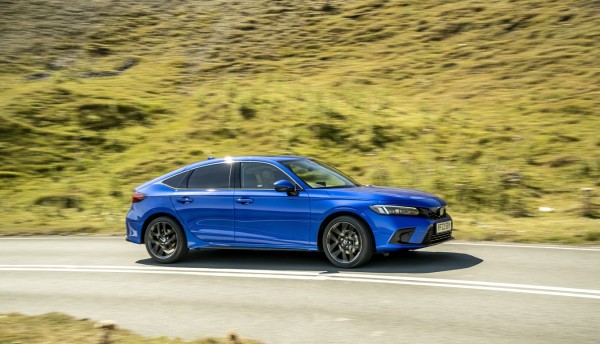
In an era where automotive interiors increasingly double as digital showcases, the Honda Civic takes a more measured path. This restrained yet functional approach signals Honda’s continued commitment to usability, durability and real-world practicality over tech theatrics. Now in its 11th generation, it remains a benchmark in the compact hatchback segment — not through revolution, but through refinement.
With hybrid drivetrains now mainstream and user expectations escalating, its cabin is a case study in balance: Between tech and tactility, minimalism and utility, comfort and packaging efficiency.
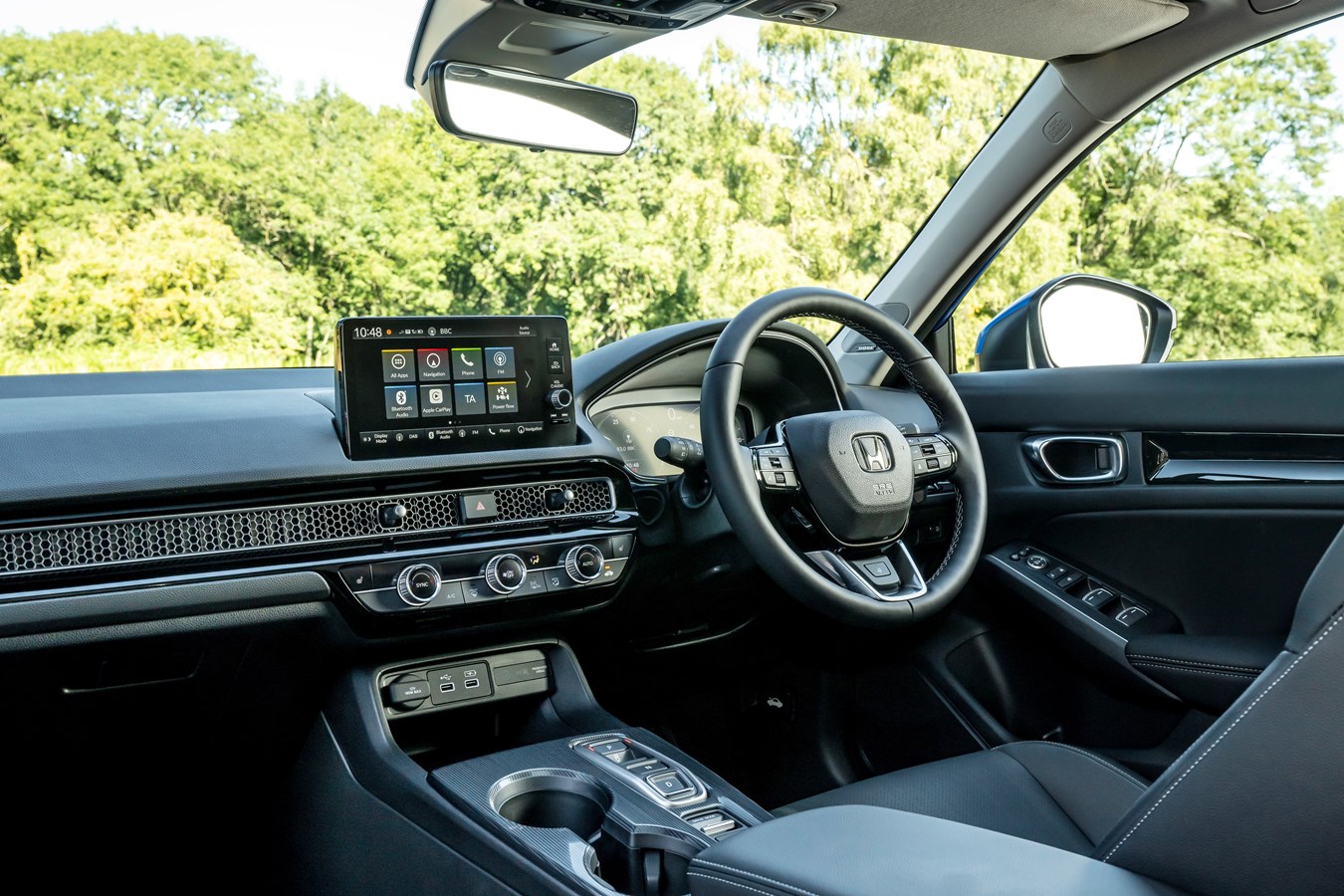
[Source: Honda]
Design and ergonomics: Prioritizing function over flash
The cabin design is a study in restraint. Clean lines, symmetrical layouts and a pragmatic material mix reflect a design language focused on usability. A notable feature is the full-width metal honeycomb mesh strip that conceals the air vents, a subtle but clever detail that reinforces horizontal visual flow and simplifies the dash aesthetic.
Soft-touch surfaces dominate the upper cabin, while more rigid plastics are limited to lower contact points. There is no attempt to compete with the premium segment’s tactile exuberance (think the Audi A3 or BMW 1 Series), but the materials feel robust and engineered for longevity.
The climate control system uses tactile rotary dials — an increasingly rare choice in a touchscreen-dominated era, but one that aligns with Honda’s user-centric approach. This design discipline reflects an interior strategy to reduce driver distraction while enhancing long-term usability.

[Source: Honda]
Seating: Ergonomics leads the experience
The Civic maintains a low driving position, closer to traditional passenger cars than sport utility vehicle-influenced rivals, with significant seat and steering wheel adjustability. All trims include lumbar support for the driver, and top-spec models offer electric seat adjustment and heating.
Legroom benefits from its 4,551 mm overall length in the rear, longer than competitors such as the VW Golf or Toyota Corolla. Rear knee clearance is good, though headroom is a trade-off. The sloping roofline, accentuated by the optional panoramic sunroof, limits vertical space for taller passengers. The rear bench remains comfortable for two adults, with a middle seat best reserved for occasional use.
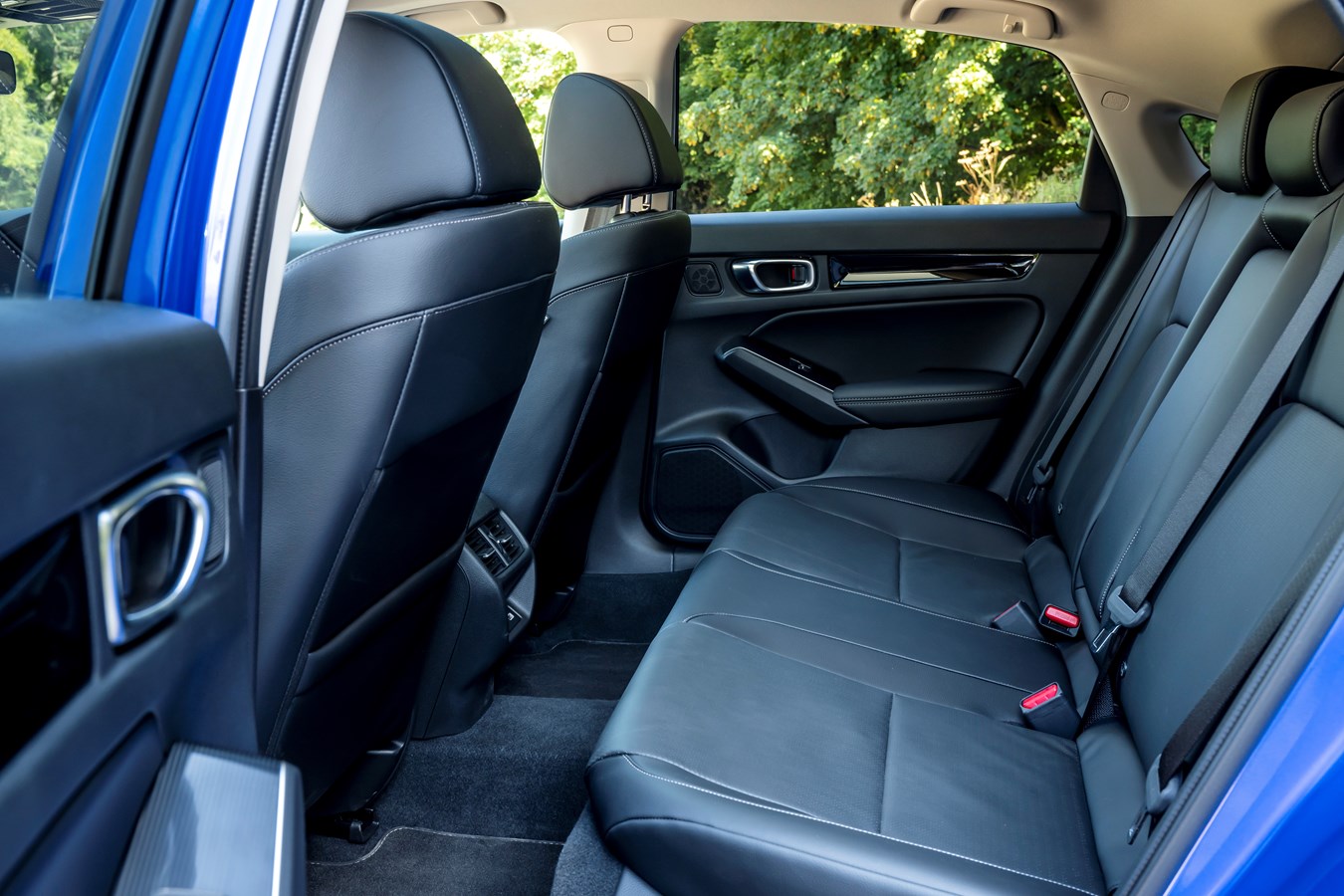
[Source: Honda]
Infotainment and connectivity: Functional, not futuristic
All trims include a 9.0-inch central touchscreen. The system delivers baseline functionality with integrated navigation, Digital Audio Broadcasting (DAB) radio and Bluetooth. Apple CarPlay is wireless, but Android Auto remains cable-dependent — a technical inconsistency that may raise questions among consumers.
The infotainment interface is intuitive, with physical shortcut buttons aiding usability, which is an asset for safety and ease of use. However, the system's graphics and processing speed lag behind market leaders. The lack of deep customization and the absence of features such as full-width map display in the digital cluster limit perceived sophistication.
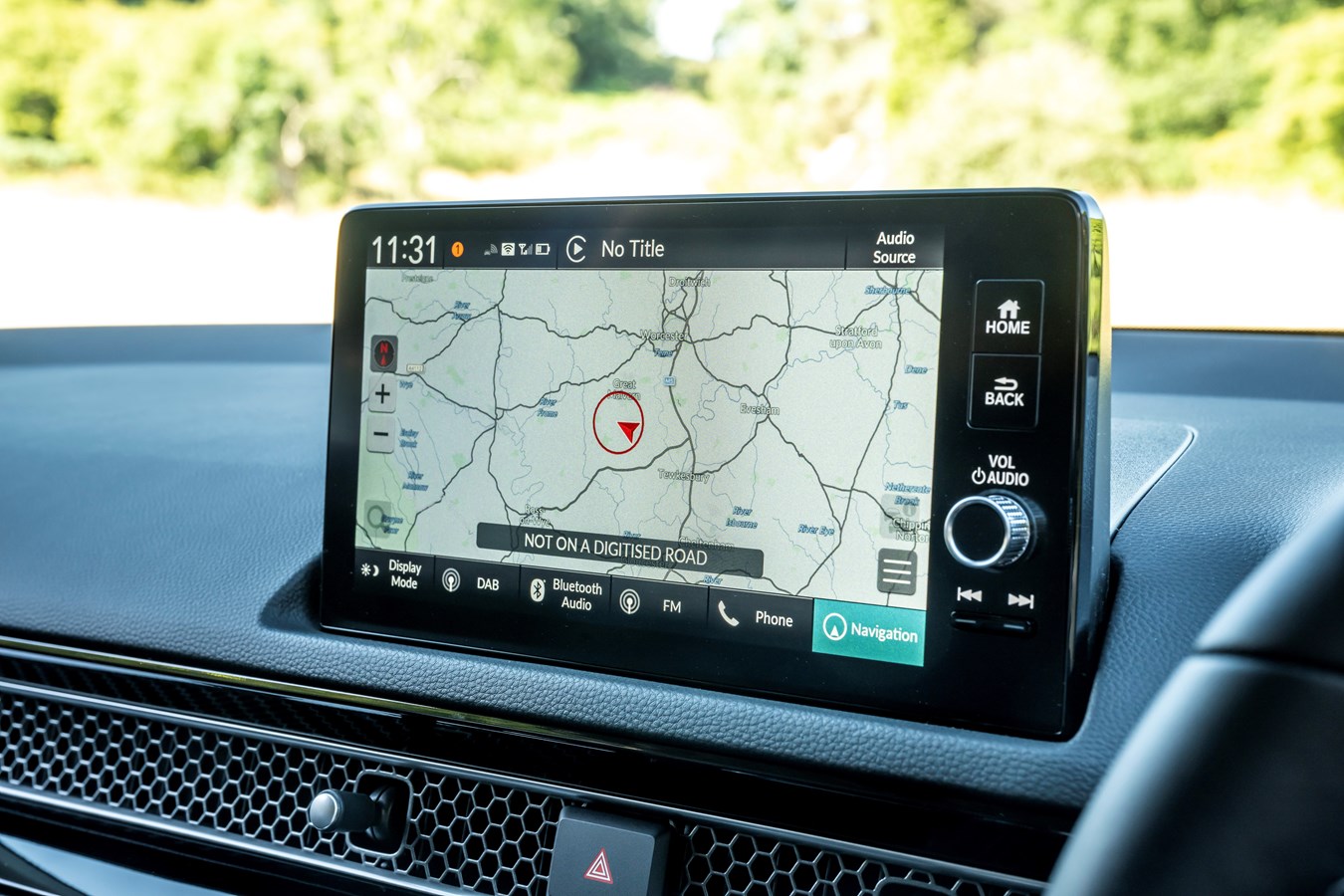
[Source: Honda]
Top trims feature a 12-speaker Bose sound system, offering improved audio clarity and volume without distortion. Lower variants use an 8-speaker setup, which is adequate for general use but lacks the premium option's dynamic range.
A 10.2-inch digital driver display is available in mid and upper trims, replacing the analogue dials. It is clear and legible but lacks the configurability seen in rival offerings, such as the Volkswagen Digital Cockpit or Mazda’s reconfigurable cluster.
Storage and cabin practicality: Designed for daily use
Front occupants benefit from deep door bins, a wide center console with two cupholders, a wireless charging pad (Sport trim and up), and a covered storage bin beneath the armrest.
Rear storage is modest, with seatback pockets and door bins, while the top-spec Advance trim adds rear air vents and charging ports that are often omitted in competitor models at this price point.
With 410 liters (404 liters in models equipped with the Bose audio system), the Civic outpaces key rivals in usable volume, beating the VW Golf (381L) and Toyota Corolla (313L). The boot includes practical features such as a 12-V socket, shopping bag hooks and a retractable side-pull cover, enhancing real-world usability. The only downside is a relatively high load lip, which can complicate loading heavier items.
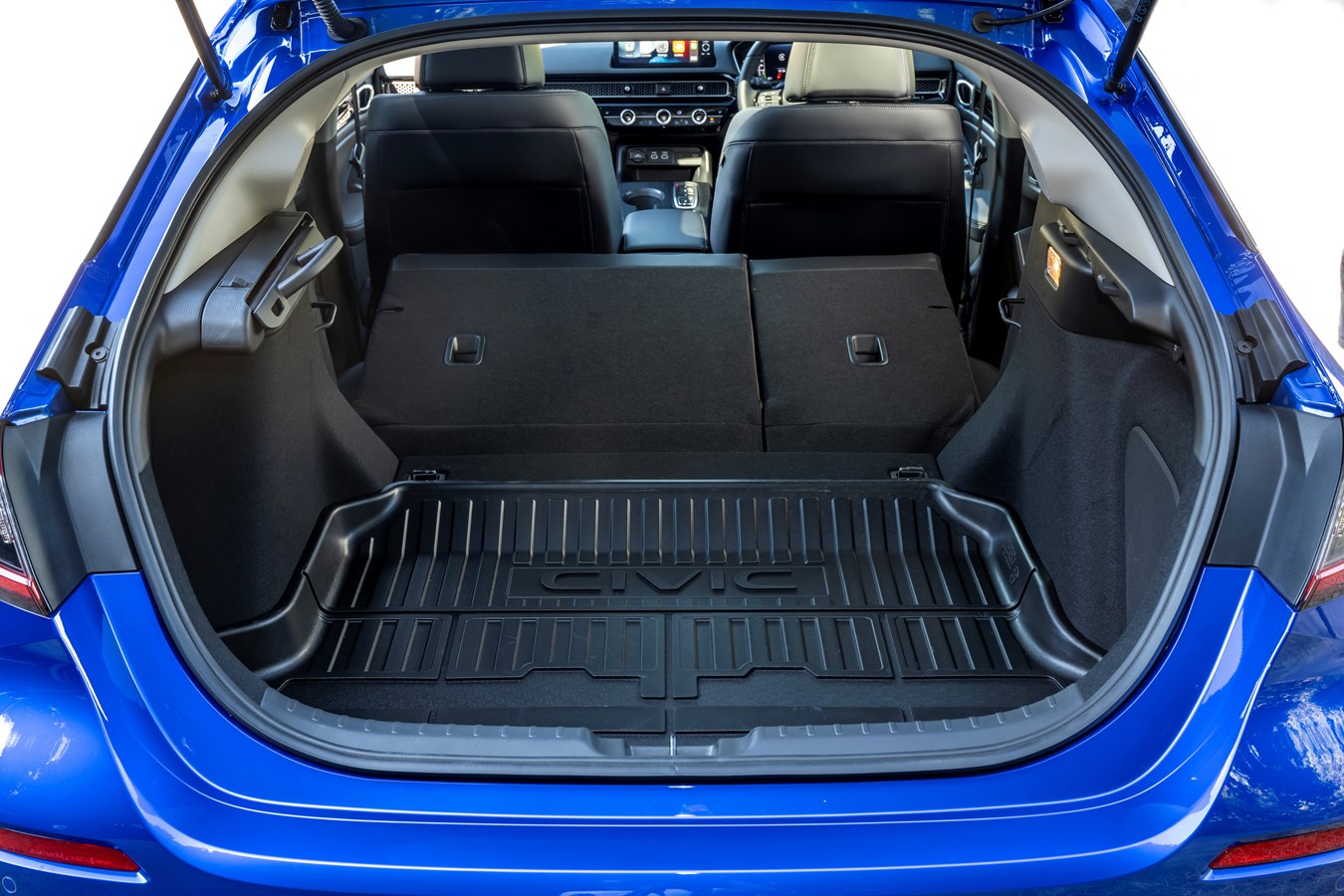
[Source: Honda]
Technology and trim differentiation: Clearly tiered value
Honda’s trim strategy delivers a clear progression of equipment:
- Elegance (Base): Includes the full infotainment suite, digital driver cluster, dual-zone climate control, heated front seats and keyless entry.
- Sport: Adds wireless charging, larger driver display, heated steering wheel and synthetic leather trim.
- Advance: Introduces full synthetic leather, electrically adjustable front seats, panoramic roof, ambient lighting and the Bose audio system.
The tech suite is comprehensive, with notable standard features that include adaptive cruise control, lane-keeping assist, traffic sign recognition and collision mitigation systems. However, a minor issue is the often inaccurate speed warning system. It misreads signage and cannot be quickly disabled.
Conclusion: Quiet competence in a loud segment
The interior does not chase headlines, but that may be its greatest strength. In a segment where some original equipment manufacturers pursue in-cabin theatrics, Honda delivers something far more valuable: A durable, spacious and genuinely user-friendly interior experience.
The interior strikes a deliberate balance between functionality and restraint, positioning itself as a pragmatic choice in the compact hatchback segment. While the infotainment system performs reliably, a next-generation upgrade is needed to resolve the inconsistency in Apple/Android integration. Material selection is smartly tiered across trims, maintaining perceived quality without inflating costs. Generous cabin packaging, especially in legroom and boot space, capitalizes on the car’s extended length, while the conservative design philosophy is likely to resonate with buyers prioritizing durability over novelty. The Civic showcases how disciplined design and ergonomic clarity can create lasting appeal — for suppliers, it highlights continued demand for tactile controls and efficient material use — and demonstrates Honda’s strategy to remain a dependable, volume-oriented player rather than a tech-first innovator. In short, the Civic’s cabin does not break new ground, but it is solid ground, and that is precisely the point.
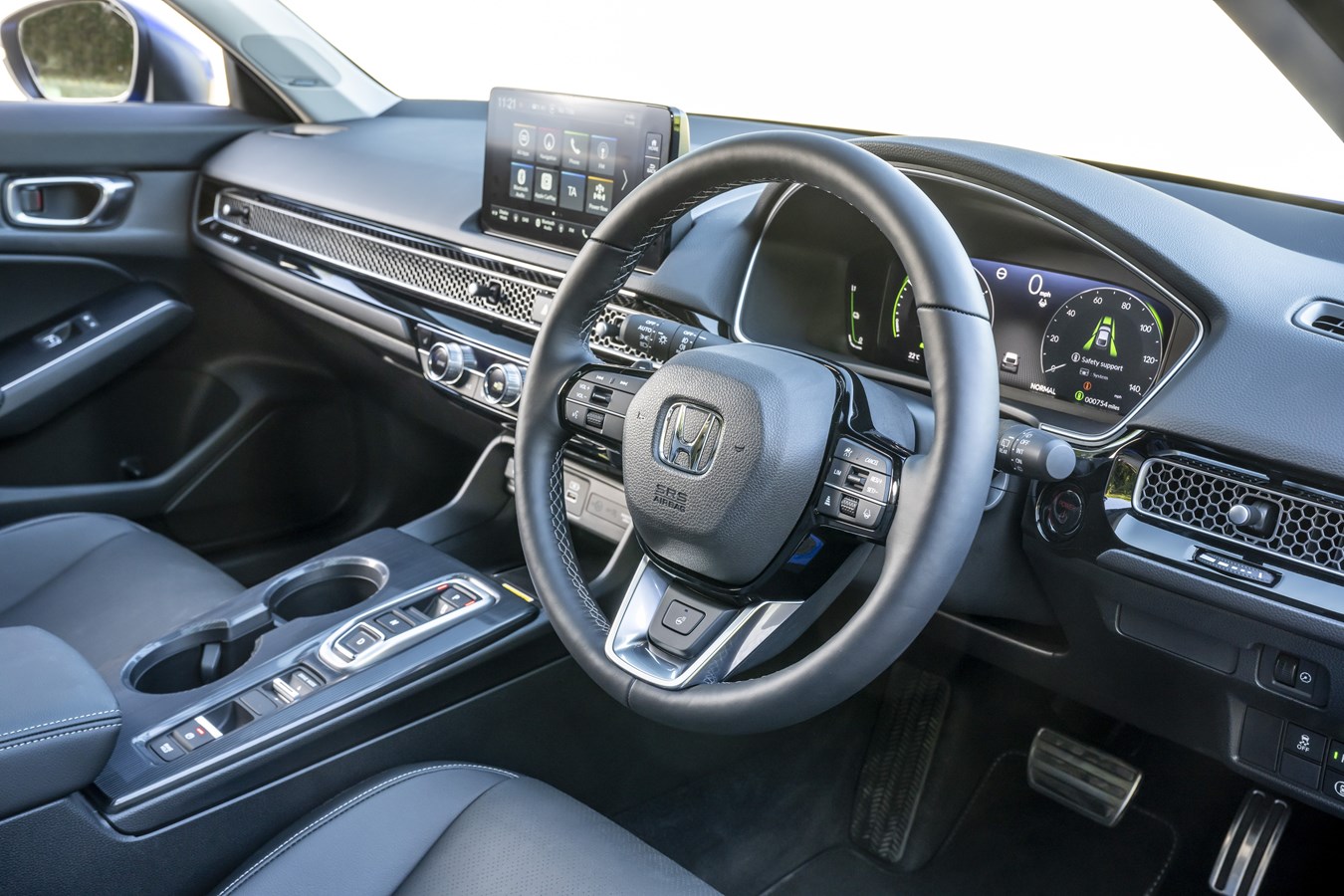
[Source: Honda]
S&P Global Mobility’s latest report on “New interiors: Function integration, materials and new concepts” offers a detailed analysis of how automakers are pursuing the twin goals of integrating smart functions into interior trim components and increasing the use of sustainable materials.








